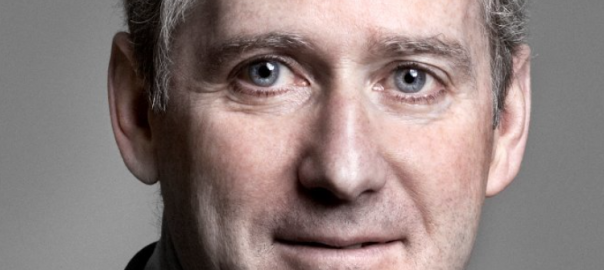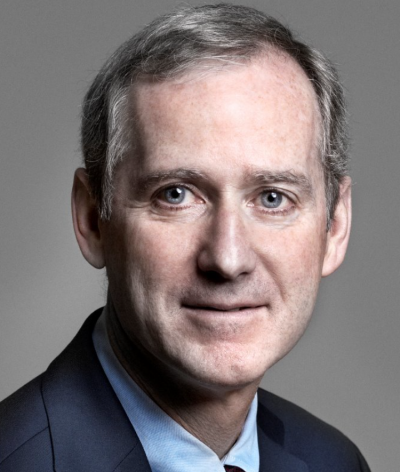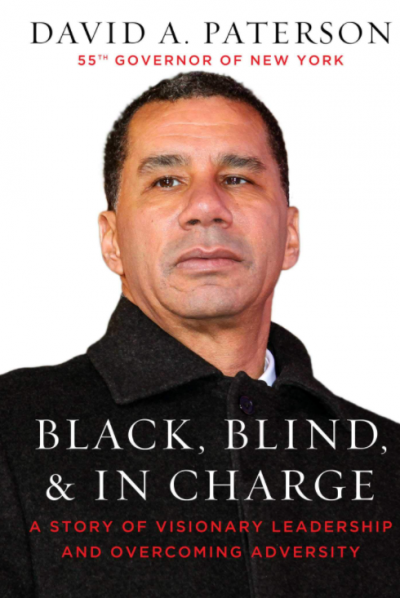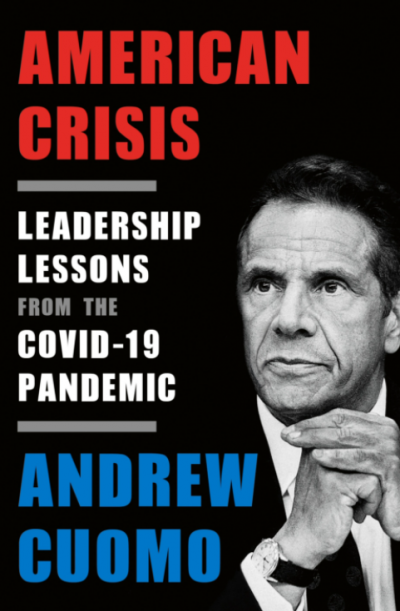
TALES FROM TWO GOVERNORS IN CRISIS

Two New York governors published memoirs within weeks of each other recently: Andrew Cuomo’s much commented upon American Crisis: Leadership Lessons from the COVID-19 Pandemic and David Paterson’s less noted Black, Blind & In Charge: A Story of Visionary Leadership and Overcoming Adversity. Politically attuned New Yorkers will learn few new details from these self-congratulatory narratives, although both provide insight into what makes a governor succeed or fail.
Paterson was lieutenant to Governor Eliot Spitzer in 2008 when federal agents recorded his boss arranging illegal date nights with high priced call girls. The revelations coincided with accusations that Spitzer had ordered state police to spy on his arch political enemy, State Senate Majority Leader Joseph Bruno. With few friends in the legislature, which held the authority to impeach him, the governor’s position became untenable.
Paterson writes that he learned of the stunning development when a Spitzer aide, hiding in a bathroom outside of the governor’s earshot, called to inform him the top office would soon be his. It was typical of the lack of respect afforded people in a job whose main function is to live a heartbeat away from an elected leader. (Cuomo’s memoir makes no mention whatsoever of Lieutenant Governor Kathy Hochul).
The “conspiracies of improbability,” as Paterson calls the events that landed him in the highest elected office in one of America’s most important states, were the culmination of a career that combined a lucky start with occasional bold decisions.

Percy Sutton, Charles Rangel, and David Dinkins, along with Paterson’s father, Basil, constituted the so-called Gang of Four that dominated Black politics in Manhattan for more than a generation. When a Harlem state senator died in 1985, they told David – legally blind and in search of a career – that he would be the replacement. It was his father’s stature as a former deputy mayor to Ed Koch and Secretary of State under Governor Hugh Carey that created the opportunity for him at the age of 32. He won the seat, or was gifted it, if you like, and held the sinecure for 21 years.
Spitzer’s decision to tap Paterson for the job of governor-in-waiting was based on Paterson’s popularity with African American voters and his standing with his fellow state senators. Shrewd maneuvering during an inflection point in the political landscape won him the Senate Minority Leader’s post. Since Republicans had dominated New York’s upper legislative chamber for decades, the honor brought with it little power, but it signified acceptance. Spitzer campaigned as an outsider, with Paterson offering insiders some comfort with the ticket.
One would think a man who had navigated the dirty waters of Albany politics for decades would have been primed to take the helm. Yet Paterson never found the ship of state’s tiller. Elevated by accident, he possessed no mandate to govern. On his watch, the State Senate became an unmanageable circus when a handful of corrupt Democrats, their party suddenly in the majority, used their positions for personal gain by swinging control to the Republicans and back again. Chaos in Albany made the governor look weak. The 2008 financial industry meltdown created a crippling budget crisis, and Paterson became the prime target for discontent over severe service cuts.
“For my entire life, I have reveled in humor . . . ,” Paterson writes, yet laughing only proved healthy up to a point. Despite ample intellect and political experience, Paterson, who opened his inaugural speech to the state legislature with a brace of jokes inappropriate for the discouraging moment, struggled to take himself seriously. That, in turn, caused others to do the same.
Legislators double-crossed Paterson or ignored him with impunity. Saturday Night Live compounded his public credibility gap by portraying him as a hapless, blind, African American fumbling his way through life. Many found the skits more cruel than funny, yet they diminished his ability to govern. Self-inflicted errors—the Caroline Kennedy for Senate debacle, a well-intentioned, clumsy-as-could-be call to discourage abuse charges against an aide, the Yankee ticket scandal—hurt him as well. He declined to run for re-election.
It is unlikely anyone has ever accused Andrew Cuomo of not taking himself seriously enough. In 2010 he sprinted towards the office Paterson would vacate and won handily. Victory vindicated him after his disastrous 2002 campaign for the job, and his father’s 1994 loss to George Pataki. Those events were all captured in Cuomo’s 2014 campaign biography, All Things Possible, and are reprised in summary in American Crisis, which is his account of how he has dealt with the worst public health crisis in New York and American history.
A worldwide pandemic commanded a national response; none worthy of mention occurred. We now know that President Trump was fully informed and chose, foolishly and cruelly, to treat a lethal threat as a public relations challenge. The result to date is over eight million confirmed cases in the United States, and 220,000 deaths, numbers which continue to climb without mercy by the day.
It is only half-time in this deadly, anything-but-a-game, pandemic. Why then has Governor Cuomo written a book about his management of the crisis? It is his effort to control the narrative before someone else does to his dissatisfaction. (For example, the October 21, 2020 edition of the Financial Times provides a lengthy alternative assessment of New York’s COVID response, with the damning headline: “How New York’s missteps let COVID-19 overwhelm the US.”)
Federal dysfunction and abdication hit New York hardest (doesn’t it always? Think 9/11). Cuomo had to invent a playbook largely on his own when New York’s historic role as the port of entry for foreigners brought planeloads of deadly virus to the Empire State from Europe and Asia. He sought, and was granted, emergency powers by the state legislature.
Protecting people against threats from which individuals cannot possibly protect themselves is government’s most important role. Within weeks it became apparent that the only hope for containing the virus was to impose restrictions on daily life unlike any Americans have ever faced. For a time, offices and classrooms all closed. There were no restaurants, no retail shopping, no museums, no sporting events, no big weddings, no family funerals, no religious services. In short, it became Governor Cuomo’s job to forbid 19.5 million New Yorkers from enjoying most aspects of modern life.

As new cases of virus have diminished in New York, there have been partial openings. Yet there will be no new normal until a vaccine and a treatment are found. The governor continues to impose essential restrictions on a public weary of life so limited.
Communicating unpleasant news to a frightened public while dealing with fractured information and constantly changing circumstances is a perilous challenge for a leader. Cuomo rose to the occasion as the daily COVID-19 death count in New York State climbed relentlessly into the hundreds before it crested, and mercifully fell to a sadly lingering handful a day.
Cuomo held briefings every day for more than 100 days, often at the same time and employing the same format in order to provide continuity in the face of cataclysmic disruption. In personal terms that created an emotional connection with the public, he explained in plain English what we knew about the virus, what the government was doing in response, and how New Yorkers needed to change their behavior to reduce the risks of illness and death. Since there was nothing of the kind coming from the President, Cuomo became, de facto, the nation’s leader.
Like Paterson, Cuomo was born into political royalty. In a weird but endearing passage, Cuomo talks about the comfort he sometimes takes from wearing his father’s shoes, which Mario used to shine with affectionate care. The metaphor requires no explanation. By the time the pandemic struck, the younger Cuomo had been elected three times and had built an able and loyal team that supported his self-described “obsessive” pursuit of results. They conquered daunting logistics.
Cuomo has been praised aplenty for his crisis management, but also criticized sharply, especially for a protocol that sent COVID patients from hospitals to nursing homes. He denies the charge and claims instructions were misinterpreted. He has also been dressed down for bragging about how successful his efforts were. To date, nearly 33,000 New Yorkers have died—a number never cited in the book—more by far than in any other state. With weaker leadership it might have been many more. Still, an end zone dance atop enough graves to fill a stadium is unseemly no matter the rationale.
And at the end of Cuomo’s memoir I found myself asking: Now what?
The desperate measures adopted to contain the virus led to 20 percent unemployment in New York City at its peak, and nearly 16 percent statewide. Restaurants, small businesses and retail outlets, not-for-profits and cultural institutions, public agencies, and local governments have had their finances gutted. Real recovery from the worst economy since the Great Depression will require major initiatives the likes of which we have not seen for decades.
Will Cuomo launch the recovery program New York needs? “We can still do big, bold things; we just have to dare to try,” Cuomo writes. The assertion, which carries an, I-alone-can-fix-it-vibe, accompanies an achievement of what he calls an “impossible” task. What was this remarkable event? Disinfecting New York City subway cars nightly. Not exactly a moonshot. And does anyone doubt that former Transit Authority chief Andy Byford would have gotten the job done had Cuomo not driven him from New York for committing the unpardonable sin of being more likable than the governor?
Cuomo quotes his father as once telling him some people think up good new ideas and some people are good at implementing good ideas, but that it is impossible to find a person who can do both. It is clear Andrew Cuomo seeks to prove his father wrong. For New York’s sake, let’s hope he can.
Chris McNickle writes about New York government and politics.
